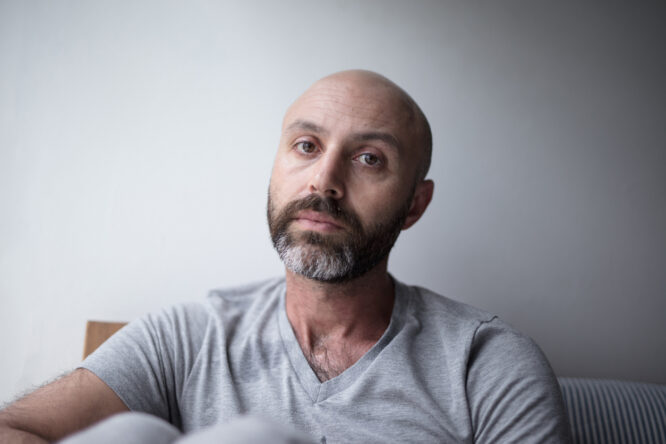When people think of depression, the first symptom that comes to mind is probably sadness.

Sure, that’s part of it, but it’s definitely not all it includes. Heaviness is also a big issue—a kind of physical, bone-deep fatigue that makes it hard to move, even when you want to. This is known as leaden paralysis, and for people who experience it, it’s one of the most frustrating and misunderstood symptoms of depression. However, it’s not impossible to overcome. Here are some things that can actually help when even getting out of bed feels like climbing a mountain.
1. Recognising that it’s real, and not laziness

The first thing that helps is understanding that this isn’t just being tired or unmotivated. Leaden paralysis is a real, documented symptom of depression that affects the nervous system. It’s a physical weight that makes even simple tasks feel impossible.
That validation matters. It changes the mindset from self-blame to self-awareness. When you stop shaming yourself for what your body can’t do, you start opening the door to real care instead of silent suffering.
2. Creating a no-pressure morning routine

Getting moving in the morning is often the hardest part. Instead of aiming for a perfect routine, focus on one gentle action—sitting up in bed, drinking water, opening the curtains. No expectations, just movement. Even one small change in posture or light exposure can start to pull you out of the stuckness. These early choices aren’t about fixing the day. They’re about showing your brain and body that forward motion is still possible.
3. Letting go of the “all or nothing” mindset

When everything feels heavy, it’s tempting to believe that if you can’t do it all, you shouldn’t bother at all. However, progress isn’t about completing the full routine, replying to every message, or getting everything done in one go. It’s about doing something—anything—that nudges you forward. Making a sandwich, brushing your teeth, walking to the end of the street. These things count, even if they don’t feel like much at the time.
4. Eating small, frequent meals to support energy

Depression can mess with your appetite, but skipping meals can make the physical heaviness worse. Even something small, like toast, yogurt, or a handful of nuts, helps stabilise blood sugar and keep your energy from crashing further. Food won’t fix depression, but it supports your body in ways that make the mental load slightly easier to carry. Start with what’s easiest and most accessible, not what’s ideal.
5. Finding low-effort movement that doesn’t feel punishing

Traditional advice about exercise can feel tone-deaf when leaden paralysis kicks in. However, movement doesn’t have to mean a workout. Stretching in bed, swaying to music, or slowly walking around your home still counts. Calm, low-pressure movement helps break the physical stagnation without triggering guilt. The goal isn’t fitness—it’s flow. Just reminding your body that it can still move, even a little, can help reduce that sense of stuckness.
6. Naming what’s happening instead of fighting it

Sometimes, saying it out loud—“this is leaden paralysis”—can help take away some of the shame and fear. It gives you language for what’s happening, which can create just enough emotional distance to respond with care instead of panic. Labelling it doesn’t solve it, obviously, but it grounds you. It stops the spiral of “what’s wrong with me?” and replaces it with “I know what this is.” That change can make it easier to move through the day without spiralling further.
7. Using sensory input to gently stimulate your system

When your body feels like it’s shut down, gentle sensory stimulation can help. Things like a cool flannel on your face, a textured blanket, or even holding an ice cube can jolt your system just enough to feel a little more alert. You’re not forcing yourself to feel better—it’s about creating tiny moments of physical engagement that remind your nervous system it’s still connected. These small interventions can cut through the fog, even if just for a few minutes.
8. Talking to someone who doesn’t need you to perform

When everything feels heavy, socialising can sound unbearable. However, having one person you can check in with—someone who doesn’t expect energy or cheerfulness—can help ease the isolation that often makes this symptom worse.
It might just be a voice note, a short message, or sitting silently on a call. It’s not about conversation—it’s about not feeling so alone inside the weight. That small bit of connection can offer grounding when your own body feels like it’s turned against you.
9. Using visual reminders of progress

When leaden paralysis hits, it can feel like nothing’s happening, even when you’ve made small efforts. Leaving a note on the fridge, ticking a box on a whiteboard, or keeping a “things I actually did today” list can help you see that you’re still showing up. These reminders have nothing to do with productivity—they’re about proof. Proof that you’re still here. Still trying. Still getting through it, even if it doesn’t look like much from the outside.
10. Getting medical support without feeling guilty or ashamed
 Source: Unsplash
Source: Unsplash This isn’t just about pushing through—it’s about understanding that medical intervention might be necessary. Leaden paralysis is often linked to specific types of depression that respond well to medication, therapy, or a combination of both.
There’s no shame in needing help that goes beyond lifestyle fixes. If your body feels stuck in ways you can’t explain, it’s okay to ask for support from someone who can help you move through it. You don’t have to do it all alone, or figure it all out on your own.




